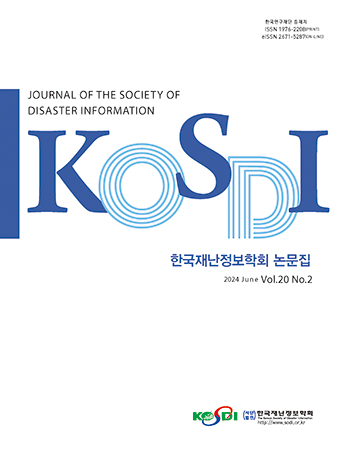Original Article
Abstract
References
Information
Purpose: A study was conducted to ensure the structural safety of a raised girder bridge with improved cross-sectional efficiency compared to the conventional PSC girder. For this purpose, the cross-sectional specifications such as girder length, height, and width were determined, the arrangement of the tendons was designed, and the practical performance of the raised girder under static and dynamic loads was verified. Method: The static performance experiment examined the serviceability limit state by measuring behavioral responses such as deflection and cracking to primary and secondary static loads. In addition, the dynamic load loading experiment measured the acceleration and displacement behavior response over time to calculate the natural frequency and damping ratio to examine the usability limit state. Result: As a result of the static performance test, the deflection value based on the maximum applied load showed stable behavior, and the crack width measured at the maximum applied load level was very small, satisfying the serviceability limit state. In addition, a natural frequency exceeding the natural frequency calculated during the design of the dynamic loading experiment was found, and a damping ratio that satisfies the current regulations was found to be secured.
연구목적: 종래의 PSC 거더에 비해 단면 효율이 개선된 양각 거더교의 구조적 안전성을 확보하기 위한 연구를 수행하였다. 이를 위해 거더 길이, 높이, 폭과 같은 단면의 제원을 정하고 강연선의 배치를 설계하여 정적 및 동적 하중에 의한 양각 거더의 실질적인 성능을 검증하였다. 연구방법: 정적 성능 실험은 1차 및 2차 정적 하중에 대한 처짐, 균열 등의 거동 응답을 측정하여 사용성 한계상태를 검토하였다. 또한, 동적 하중 재하 실험은 시간에 따른 가속도, 변위 거동 응답을 측정하여 고유진동수 및 감쇠비를 산정하여 사용성 한계상태를 검토하였다. 연구결과: 정적 성능 실험 결과 최대 재하하중 기준 처짐값은 안정적인 거동을 나타났고, 최대 재하하중 수준에서 측정된 균열폭은 매우 작아서 사용성 한계상태를 만족하는 것으로 나타났다. 또한, 동적 하중 재하 실험 설계 시 산정된 고유진동수를 상회하는 고유진동수가 나타났으며, 현행 규정에 만족하는 감쇠비를 확보하는 것으로 나타났다.
- Chung, W.S., Phuvoravan, P., Liu, J., Sotelino, E.D. (2005). "Applicabiliy of the simplified load distribution factor equation to PSC girder bridges." KSCE Journal of Civil Engineering, Vol. 9, No. 4, pp. 313-319. 10.1007/BF02829044
- Jeon, S.J., Choi, M.S., Kim, Y.J. (2012). "Graphical assessment for span ranges of PSC girder bridges." Journal of Bridge Engineering, Vol. 17, No. 2, pp. 343-352. 10.1061/(ASCE)BE.1943-5592.0000264
- Kim, J.T., Park, J.H., Hong, D.S., Park, W.S. (2010). "Hybrid health monitoring of prestressed concrete girder bridges by sequential vibration-impedance approaches." Engineering Structures, Vol. 32, No. 1, pp. 115-128. 10.1016/j.engstruct.2009.08.021
- Kim, K.S., Yang, I.H. (2010). "Development of new type PSC beam girder bridges in Korea." Journal of Korea Concrete Institute, Vol. 20, No. 3, pp. 26-33.
- Kim, S.H., Lee, C.G., Ahn, J.H., Won, J.H. (2011). "Experimental study on joint of spliced steel - PSC hybrid girder, Part I: Proposed parallel-perfobond-rib-type joint." Engineering Structures, Vol. 33, No. 8, pp. 2382-2397. 10.1016/j.engstruct.2011.04.012
- Lee, J.C., Jung, J.H., Kim, S.J., Lee, H.Y. (2006). A Study on the Effect of Backwater due to Bridge and Culvert in the Stream. OTKCRK191062, National Disaster Management Research Institute, Ulsan.
- Park, S.J., Kim, T.H., Kim, Y.J., Kim, S.W. (2009). "Construction of precast segment PSC Pier." 35th Korean Society of Civil Engineers Annual Symposium, Seoul, pp. 1428-1431.
- Publisher :The Korean Society of Disaster Information
- Publisher(Ko) :한국재난정보학회
- Journal Title :Journal of the Society of Disaster Information
- Journal Title(Ko) :한국재난정보학회논문집
- Volume : 19
- No :4
- Pages :851-858
- DOI :https://doi.org/10.15683/kosdi.2023.12.31.851




 Journal of the Society of Disaster Information
Journal of the Society of Disaster Information







